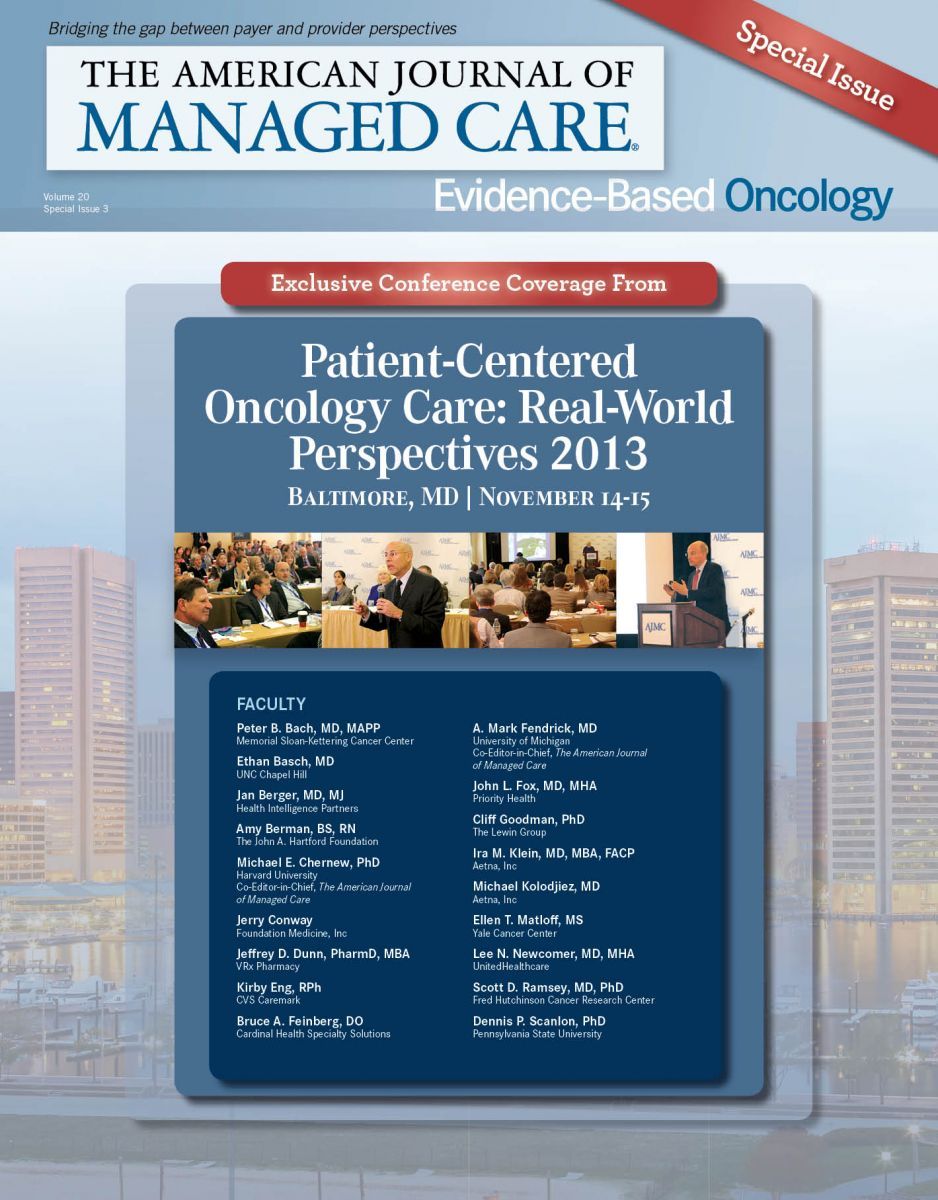Publication
Article
Evidence-Based Oncology
The Present-and Future-of Genetic Profiling in Oncology
Author(s):
What will next-generation sequencing look like? How will the use of data make its way into clinical care?
What will next-generation sequencing look like? How will the use of data make its way into clinical care? Jerry Conway, vice president of Reimbursement & Payer Strategy at Foundation Medicine, Inc, offered a glimpse of the future in his talk, which sparked a discussion of risk sharing between payers and pharmaceutical companies.
Cancer starts with DNA, when something goes wrong genetically. In the future, stopping cancer will mean moving beyond a tumor’s anatomy and into the genetic makeup. Going from the tumor level to the molecular level is what big data and targeted therapies are all about—but how will the data make it into the physician’s office?
Jerry Conway outlined how Foundation Medicine is partnering with pharmaceutical companies and with academia to approach cancer in a whole new way, one in which, he said, “Each patient’s diagnosis and treatment is informed by a deep understanding of the molecular changes that drive their disease.”
As Conway described it, the database Foundation Medicine is creating shows that each person’s cancer is more like a fingerprint. To address that uniqueness, Foundation Medicine’s quest is to assemble “huge amounts of data,” and to translate it “so it makes a difference at the point of care.” The goal is to gather enough data so that when a patient’s genomic profile is ordered, all those data and the current literature can be analyzed, giving providers an actionable gene on which to base treatment.
Beyond direct clinical care, the company is working with pharmaceutical companies to speed the approvals of new therapies—even resurrecting compounds that had been discarded.
Foundation Medicine’s approach involves using a single test to delve into the genetic makeup of a tumor, instead of multiple tests piled atop one another. Known as FoundationOne, the company describes the test as “a fully informative genomic profile that helps physicians make treatment decisions for patients with cancer, by identifying the molecular growth drivers of their cancers and helping oncologists match them with relevant targeted therapeutic options.”1
Conway said the profile, which involves 236 suspect genes and takes 14 to 17 days, has enormous therapeutic and potentially cost-saving benefits— the profile can answer questions that were not asked, unlike testing that looks at only 1 aspect of a tumor.
The approach will save money over time, he said, because better matches will occur. Right now, he said, “The data suggest that 75% of cancer treatments don’t work.” Foundation Medicine seeks to dramatically reduce the failure rate by allowing clinicians to create highly specific treatments, perhaps using several drugs at once.
He presented the case of a woman with inflammatory breast cancer—the same disease Amy Berman described in her keynote address—who was about to put herself under hospice care. The patient’s tumors were so severe she could not turn her head. After using Foundation’s test, she was able to receive a targeted treatment that afforded her 7 more months, including a stretch of quality time in which she played tennis and danced at a wedding.
To some physicians, including a payer in the audience, the process sounded potentially expensive and perilous. Scott Ramsey, MD, PhD, of the Fred Hutchinson Cancer Research Center in Seattle, Washington, said he feared a future of “giving cocktails of multiple $10,000-a-month drugs based on a sequence that shows multiple genomic variants” without knowing that the patient would benefit. Conway said that would amount to irresponsible use of technology, and that the data would evolve to the point of evidence-based decisions.
EBO
Ramsey called for risk sharing between payers and pharmaceutical companies. “If we’re going to able to sustain what we’re doing, then we need some kind of a risk contract with pharma so that as the drug is tried in a patient that it appears indicated for, if the drug is not successful, part of that or all of that might be picked up by pharma, and in those patients where the drug is successful, that would be picked up—the entire cost of it—by the payer.”
1. FoundationOne website. http://www.foundationone.com/. Accessed January 5, 2014.


